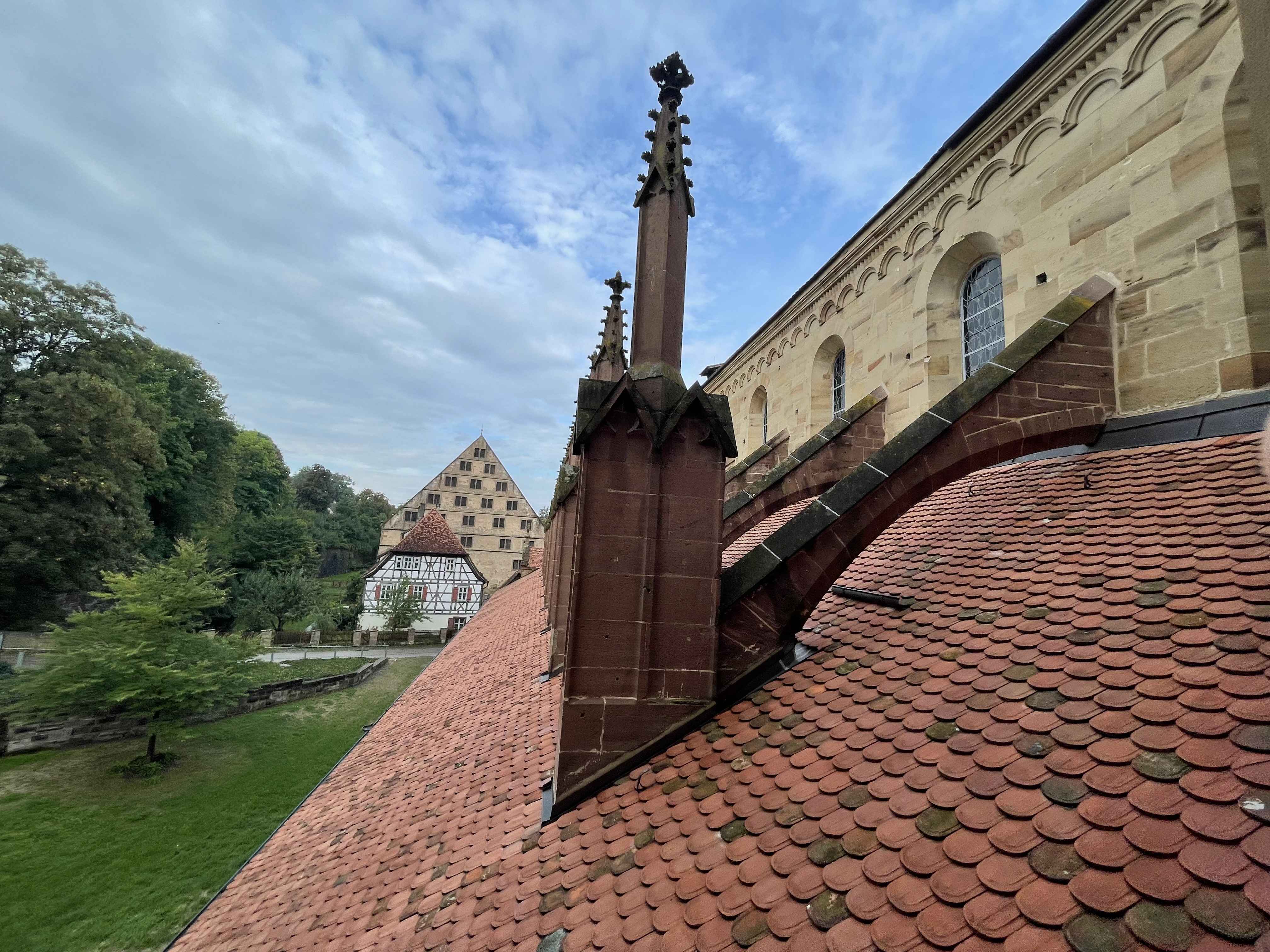- IHM - Serices and knowledge transfer in the field of clutural and natural heritage

Maulbronn Monastery Complex
Project duration: 2022-2023
The Maulbronn Monastery Complex was inscribed on the UNESCO World Heritage List in 1993. It represents one of the most complete and best-preserved medieval monastic complexes north of the Alps. The Outstanding Universal Value (OUV) of the World Heritage property is primarily based on the significance of the monastery and its establishment, particularly from the 12th to the 16th centuries. The main buildings, constructed between the 12th and 16th centuries, are surrounded by powerful walls and have a significant impact on the surrounding landscape. The monastery church, in particular, played a crucial role in spreading Gothic architecture across large parts of Northern and Central Europe (Criterion ii). The Cistercian Order was also known for its innovations in water management, as evidenced by the sophisticated system of reservoirs, irrigation channels, and drains within the monastery. Additionally, the period from the 17th to the 19th century is important, during which the monastery changed hands multiple times between the Cistercians and the Protestant Church. The latter operated the complex as a monastic school, and the monastery is still used as a school today.
IHM developed an attribute mapping exercise for the World Heritage property. The exercise also focused on potential usage conflicts, which can arise from various projects that may impact the Maulbronn Monastery World Heritage site.

